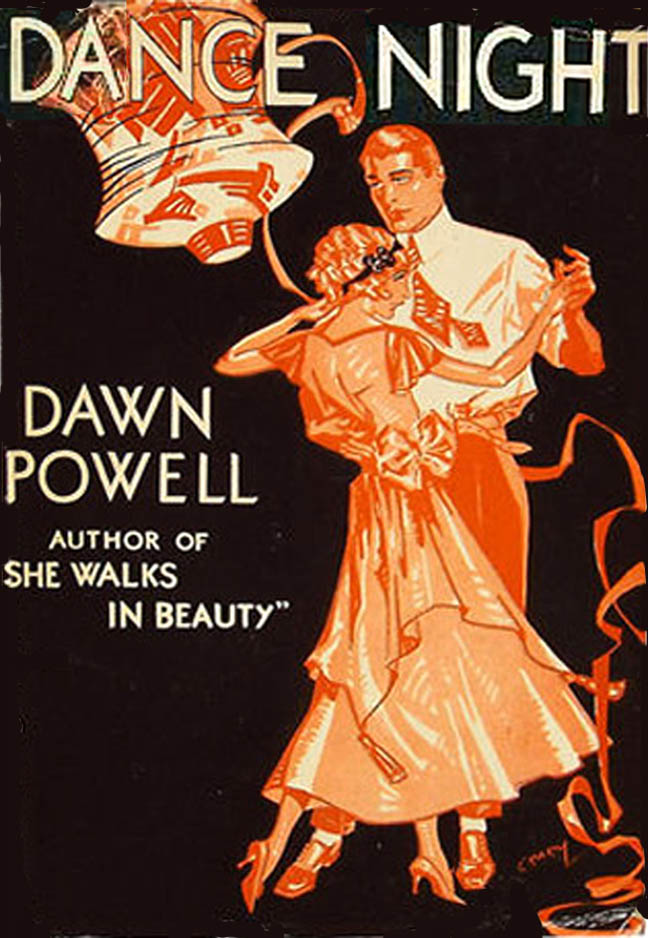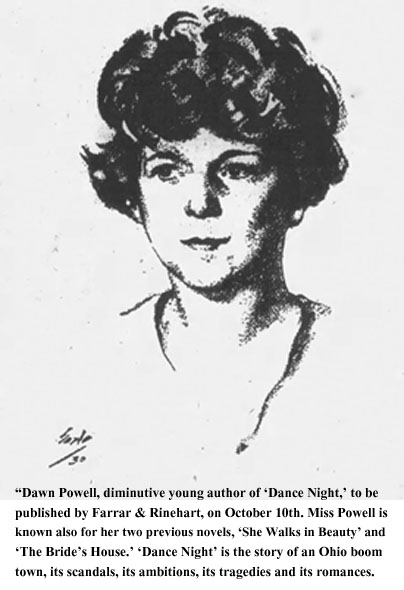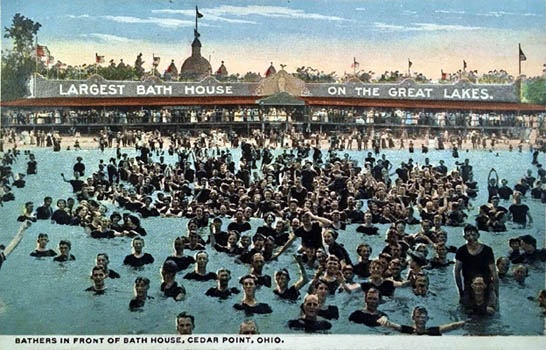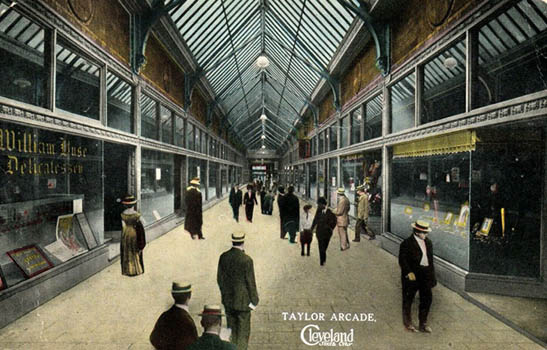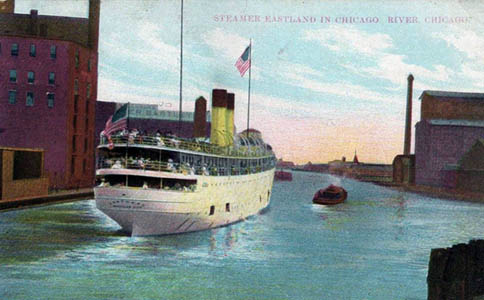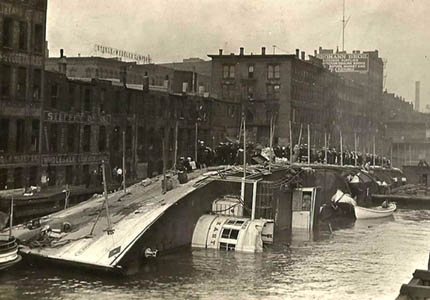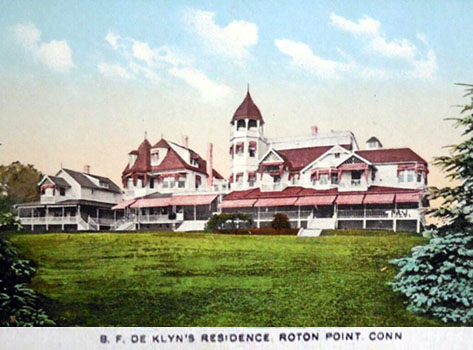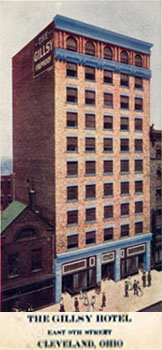- "The characters
of 'Dance Night' are angry, cynical, willful, helpless, unwilling
or resigned , but they are presented without idealization and
without malice. The hero is an uncertain youth who may do great
things, or may not. The heroine, Jen St. Clair, is a friendless
child who has learned early in life that it didn't pay to want
people too much because they 'didn't care for you the way you
cared for them.' The thing she most longed for, security, seemed
constantly to elude her But it is Elsinore Abbott, mother of
the hero Morry, who sets the tempo of the book, first as the
love-starved wife of a traveling salesman whom she murders, later
as a curiously cynical, wraith like figure of tragedy. There
are impressive portraits of the salesgirl, Nettie, who loves
the indifferent Morry bitterly. There is Mrs. Pepper, plump and
manicured 'flame' of Harry Fisher, dancing instructor, whose
hair smells of pomade and his breathe of onion; there is Hunt
Russell, a rich man's spoiled son and his mistress, Dode, with
her proud red mouth and her hard face, and a constantly changing
background of other men and women seen briefly but with camera-like
sharpness.
-
- "Dawn Powell
is the author of two other novels, 'The Brides House' and "She
Walks in Beauty,' both of which were highly praised critically
and created for their author a growing audience. Born in Mt.
Gilead, O., less than thirty years ago, and brought up in cities
and towns in the northern and central part of the state, Miss
Powell decided at the age of 11 to run away from home. When she
was 16 she became a reporter on the Shelby Daily Globe at $3.00
a week.
-
- " ' It gave
me an excuse for hanging around pool rooms, garages, and jails
where there was fun instead of staying home being brought up,'
Miss Powell explained. 'I saved 425 and went to Lake Erie college,
but I discovered that that wasn't enough to pay for my tuition
so I typed my way through college.' "
-
- "She has been
efficiency worker, press agent, farmerette, waitress and movie
extra, but for the past few years she has concentrated on writing
novels and plays. Miss Powell has been offered contracts for
scenario writing, but she rejects them as regularly as they are
presented to her, because she thinks it unlucky to do things
for money and unpleasant to take orders from anyone.
-
- "Those who know
her say that Dawn Powell writes novels because they are a release
from her unpleasant childhood, an exorcising of the ghosts, and
that when she has sung her last song of hate she will probably
cease being a novelist and grow great as a playwright. Her play
'The Party' has been purchased by the Theatre guild for production
soon. There is a duality noticeable in her every action. She
goes from seriousness to nervous and explosive humor without
warning. Her humor is great and really reputation making. She
seems to be trying to burlesque herself continually but shamefacedly.
She is a women at war with herself, seeking peace."
|
